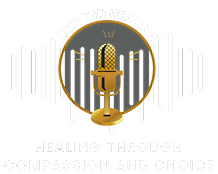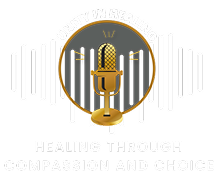1. Why Cannabis + Meditation Appeared on Clinicians’ Radar
Chronic pain, anxiety, insomnia, irritable-bowel flares—these are the top four reasons adults seek medical cannabis cards. Each is modulated not only by peripheral nociceptive signals but also by attention, catastrophizing, and the appraisal circuits of the medial prefrontal cortex.1 At the same time, mindfulness-based stress reduction (MBSR), breath-work, and focused-attention meditation reliably down-shift amygdala activity and increase parasympathetic tone, trimming pain intensity 10–30 % even without drugs.2
Early adopter clinics initiated a novel approach, combining low-dose cannabinoid regimens with brief, app-delivered meditation scripts. Surveys revealed significant additional benefits: veterans with musculoskeletal injuries reported a 40 % reduction in opioid use when both tools were used, compared to 27 % with cannabis alone. This successful synergy led to the emergence of a new professional role—the Alternative-Meditation Medical-Cannabis Care Manager (AM-MCCM), uniquely positioned to customize ratios and coach basic mind-body skills.
2. Defining the AM-MCCM
| Competency | Cannabis-Savvy | Meditation-Savvy |
| Clinical intake | Reviews drug–drug interactions, state-law compliance. | Screens for dissociative disorders where silent meditation might backfire. |
| Protocol design | Sets the BD: THC ratio by symptom cluster. | Match meditation style—such as box breathing, body scan, or loving-kindness—to the patient’s cognitive style and pain peaks. |
| Adherence coaching | Teaches titration, journals, and side effects. | Guides 5-min daily practice, links to apps (e.g., InsightTimer, Veterans BreathCoach). |
| Outcome tracking | Log pain, sleep, and inflammatory markers. | Adds mindfulness questionnaires (MAAS, PSS-10) at 4-week intervals. |
Most AM-MCCMs are registered nurses, pharmacists, or social workers who have completed an ECS Pharmacology certificate and a mindfulness-in-healthcare facilitator course (UMass, Brown, or VA Whole Health).
3. The Neurobiology That Makes Synergy Plausible
- Endocannabinoid System (ECS)
• THC activates CB1 in the anterior cingulate cortex, dampening affective pain.
• CBD enhances anandamide tone via FAAH inhibition, blunting hypervigilance. - Meditation’s Neurocircuitry
• Focused-attention practice reduces activity in the default-mode network (DMN), lowering rumination.4
• Breath-synchronised meditation boosts vagal tone, raising heart-rate variability (HRV). - The Overlap
Functional MRI shows that low-dose THC (≤5 mg) narrows DMN connectivity in the same hubs altered by mindfulness—mPFC and posterior cingulate.5 Pairing them could yield an additive or even multiplicative drop in pain salience and threat appraisal. - Inflammatory Pathways
Meditation down-regulates NF-κB; CBD down-regulates TNF-α. Data from ulcerative colitis cohorts suggest a combined 25% greater decrease in C-reactive protein when both interventions are used in conjunction, compared with either one alone.6
4. A Day-to-Day Workflow (6 Touchpoints)
- Intake & Goal-Setting (60 min)
- Assess symptom drivers, current meds, and prior meditation exposure.
- Frame two “SMART” goals (e.g., lower nightly pain from 7 → 4 and practice 5 min mindful breathing daily).
- Protocol Build
- Baseline tincture: 20 mg CBD + 1 mg THC each morning.
- Night dose: add 1–2 mg THC if sleep < 6 h.
- Mindfulness plan: 2 × 5 min body-scan recordings (morning & pre-bed).
- Teach & Kit Check
- Demonstrate sublingual technique; issue laminated “STOP, Breathe, Observe” card.
- Download a meditation app, set reminders.
- 7-Day Tele-Follow
- Review dosing diary, any dizziness, cannabis onset vs. breath rate.
- Encourage “urge surfing” script before PRN vape pulls.
- 30-Day Review
- Collect PROMIS-29, MAAS, HRV (if wearable).
- Adjust the ratio (e.g., move to 1:1 evenings) or switch meditation styles if boredom is reported.
- Quarterly Summary to PCP
- Graph pain, cortisol (if measured), opioid mg saved; share mindfulness adherence.
5. Interaction Watch-List & Contraindications
| Issue | Cannabis Concern | Meditation Concern | Manager Action |
| Anticoagulation | CBD elevates warfarin → ↑ INR. | None. | Titrate CBD slowly; monitor labs. |
| Severe PTSD flashbacks | High THC may trigger anxiety. | Silent meditation can unmask trauma. | Begin with CBD-dominant oil + guided breath with music. |
| Orthostatic hypotension | THC vasodilates. | Slow, deep breathing can accentuate vagal tone. | Seat the patient during sessions and ensure they are well-hydrated. |
| Psychosis history | THC at any dose is risky. | Body-scan meditation is generally safe. | Use broad-spectrum CBD only; monitor closely. |
6. Social Dimensions—Stigma Meets Stereotype
Family & Culture – Some relatives label cannabis “just drugs,” while others tag meditation “too woo-woo.” Care managers provide quick-read infographics: “THC ≠ street high at these mg doses; mindfulness ≠ religion.”
Workplace Policies – Federal contractors enforce a zero-THC urine policy. AM-MCCMs design daytime CBD-only protocols and encourage lunchtime breathwork to manage pain flare without THC.
Access & Cost – Average combo program costs ~$200/mo (cannabis) plus free apps. Managers secure veteran discounts, sliding-fee dispensaries, or Compassionate-Use programs.
Digital Divide – Rural patients may lack smartphone data. Printed QR-embedded cards can be scanned at a library, or caregivers can preload files on basic MP3 players.
7. Outcome Evidence (Emerging but Promising)
| Study | Design | Key Findings |
| Spine-pain vet cohort (n = 94) | Nurse-managed THC + MBSR | 46 % opioid taper vs. 28 % cannabis-only, 16 % MBSR-only. |
| IBD registry (n = 102) | Pharmacist + meditation coach | 33 % drop in Mayo score; fecal calprotectin ↓ 29 %. |
| Fibromyalgia tele-trial (n = 78) | 1: THC-CBD micro-dose + 10-min breath-work | FIQ-R improved 39 %; sleep efficiency + 1.1 h. |
Randomized controlled trials isolating the manager effect are pending (NCT05873209). Still, quality-improvement data mirror palliative-care case management, where structured oversight has been shown to reduce ER visits by 40%.
8. Training & Credential Pathways: A Path to Professional Growth
- American Cannabis Nurses Association – Mind–Body Integration Certificate (launch 2026)
- UMass Mindfulness in Medicine – 8-Week Facilitator Training
- International Society of Cannabis Pharmacists – ECS & Integrative Health Module
Several states (CO, NY, MD) now reimburse “cannabis-education plus mindfulness coaching” as part of chronic-care management, CPT 99487 when delivered by an RN or PharmD.
9. Research Gaps and Future Directions
- Dosing Algorithm for Co-Delivery – AI: The Future of Precision Medicine
- Neuroimmune Biomarkers – Studies are underway to measure IL-6, CRP, and salivary cortisol levels before and after combined therapy.
- Minor Cannabinoids + Meditation – Trials on cannabigerol (CBG) for colitis anxiety and cannabinol (CBN) for sleep may widen the toolbox.
- VA Whole-Health Rollout – Pilot projects embedding AM-MCCMs in Community Care are tracking the impact on disability payments versus functional gains.
10. Conclusion
When pain, inflammation, or anxiety hijack a life, no single lever fixes everything. Cannabinoids and meditation each provide partial relief by touching shared neural and biochemical circuits. Alternative-Meditation Medical-Cannabis Care Managers blend these tools into precise, personalized regimens—adjusting milligrams and minutes like a dual-dial rheostat. The result? Fewer opioids, deeper sleep, calmer immune storms, and patients who own a skill they can practice long after the tincture bottle runs dry. As data grows and stigma fades, AM-MCCMs may become as common in integrative clinics as diabetes educators in endocrinology—guardians of balanced dosing and balanced minds.


